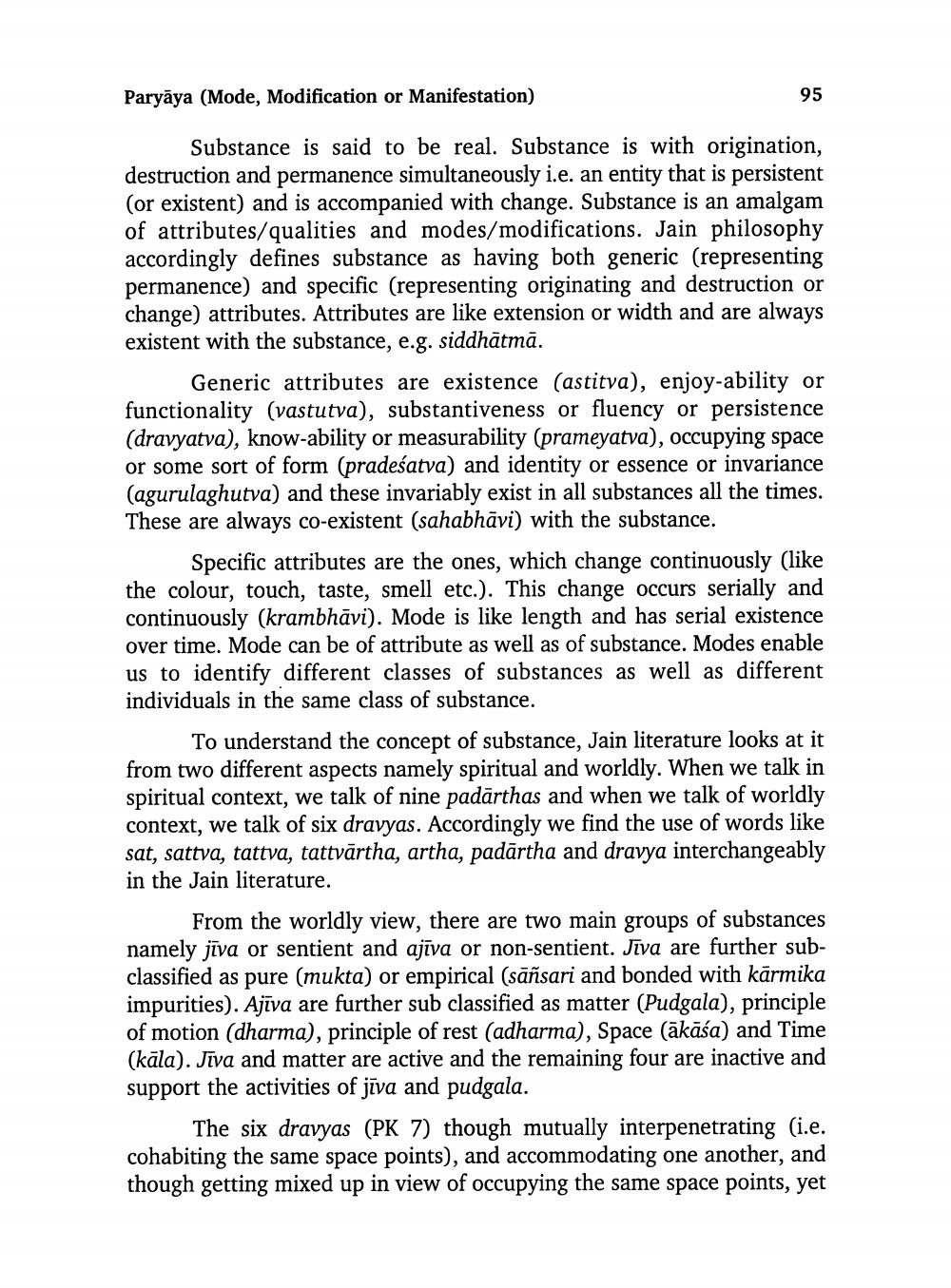________________ Paryaya (Mode, Modification or Manifestation) 95 Substance is said to be real. Substance is with origination, destruction and permanence simultaneously i.e. an entity that is persistent (or existent) and is accompanied with change. Substance is an amalgam of attributes/qualities and modes/modifications. Jain philosophy accordingly defines substance as having both generic (representing permanence) and specific (representing originating and destruction or change) attributes. Attributes are like extension or width and are always existent with the substance, e.g. siddhatma. Generic attributes are existence (astitva), enjoy-ability or functionality (vastutva), substantiveness or fluency or persistence (dravyatva), know-ability or measurability (prameyatva), occupying space or some sort of form (pradesatva) and identity or essence or invariance (agurulaghutva) and these invariably exist in all substances all the times. These are always co-existent (sahabhavi) with the substance. Specific attributes are the ones, which change continuously (like the colour, touch, taste, smell etc.). This change occurs serially and continuously (krambhavi). Mode is like length and has serial existence over time. Mode can be of attribute as well as of substance. Modes enable us to identify different classes of substances as well as different individuals in the same class of substance. To understand the concept of substance, Jain literature looks at it from two different aspects namely spiritual and worldly. When we talk in spiritual context, we talk of nine padarthas and when we talk of worldly context, we talk of six dravyas. Accordingly we find the use of words like sat, sattva, tattva, tattvartha, artha, padartha and dravya interchangeably in the Jain literature. From the worldly view, there are two main groups of substances namely jiva or sentient and ajiva or non-sentient. Jiva are further subclassified as pure (mukta) or empirical (sansari and bonded with karmika impurities). Ajiva are further sub classified as matter (Pudgala), principle of motion (dharma), principle of rest (adharma), Space (akasa) and Time (kala). Jiva and matter are active and the remaining four are inactive and support the activities of jiva and pudgala. The six dravyas (PK 7) though mutually interpenetrating (i.e. cohabiting the same space points), and accommodating one another, and though getting mixed up in view of occupying the same space points, yet




